Elements in and around a Catholic Church
Advent Wreath:
A festive wreath of greens arranged to hold four candles. There are violet signifying metanoia, and one rose color signifying hope. The candles stand for the light of Christ and also to prepare for his coming.

Altar:
On the altar, which is the center of the church, the sacrifice of the Cross is made present under sacramental signs. The altar is also the place where the sacrifice of Jesus is offered to the Father to which all People of God are invited. The altar is also known as the Lord's Table where the Eucharist is celebrated. It is to be always treated with respect. Servers and congragation should show respect when passing in front of it.
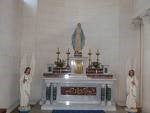
Ambo (Lectern / Pulpit):
The stand from which the readings take place. The church may use more than one.
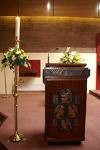
Confessional:
Either an enclosed room or screen is used (unless in a face to face meeting) where the sacrament of Reconciliation is conducted.

Credence Table:
The side table in the sanctuary where the objects (cruets, Sacramentary, hand and finger towels and bowl) used for the Mass are put before and after they are used.
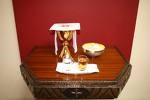
Lectionary:
This is the large book that is used by the Deacon/Lector/Celebrant for the Gospel readings and is processed into Church by the Deacon/Lector and placed on the Altar. The Deacon/Lector use a separate book containing the first and second readings for the Mass.
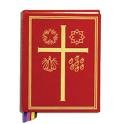
Paschal Candle:
A large white candle placed in a floor candlestick to symbolize the light of the light of the Risen Christ. It is blessed at the Easter Vigil on Holy Saturday night and lit for every celebration until Pentecost. After Pentecost, it is usedbaptisms and funerals.

Sanctuary Light:
There is always a single light burning by the Tabernacle to show the real presence of Jesus (body, soul, & divinity) in the Eucharist. This light also represents our watchfulness before Christ, the Light of the World.

Tabernacle:
The place where the Eucharist is kept. As a sign of reverence, one genuflects whenever passing in front of the Tabernacle.
Ambry:
A special box on the wall in the church where the Holy Oils are kept.
Aspergillum:
A liturgical instrument used to bless people and objects with Holy Water in the liturgy and during blessings. The word comes from the Latin word "aspergere" meaning to sprinkle.

Candle Wick / Extinguisher:
This instrument is used to light and extinguish candles.

Censer / Thurible:
The metal container that holds the charcoal for the incense. This is carried by the server in the right hand.

Chalice:
The cup used by the celebrant when he consecrates the wine into the Blood of Christ.

Chalice Veil:
A cloth covering that goes over the chalice while it is on the Credence Table.
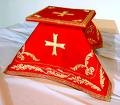
Corporal:
A square piece of white cloth which is spread over the altar cloth. It is put on the altar where the celebrant will say Mass. The chalice and paten are placed on it.

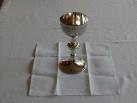
Cruets:
Covered bottle-like containers that hold the water and wine.

Holy Water Font:
This item is found at the doors of the Church and is used to bless oneself before entering the Church.

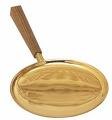

Paten:
Used to hold body of Christ during consacration.
Incense & Incense Boat:
Incense is a mixture of resins, bark and other natural materials which gives off a sweet smelling smoke when burned. The smoke rises and represents our prayers rising to God. The celebrate will tell the servers when it will be used. The boat is a small container that holds the incense. This is usually carried by the server in the left hand.
Lavabo:
The washing of the Celebrant's hands before the Eucharistic Prayer. The servers bring the bowl, water cruet, and a towel while the celebrant prays for forgiveness.
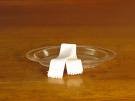
Monstrance:
From the Latin word "Monstro" which means "I show". A metal container that is used to display or show the Blessed Sacrament. It is often gold or silver in color. The monstrance is used during Benediction or Exposition of the Blessed Sacrament.

Oils:
The holy oils are blessed during Holy Week by the Bishop and the priests of the diocese. One is called: "Oil of the Sick" used for the sacrament called Anointing of the Sick. Another is called: "Oil of Catechumens", used in Baptisms. The last one is called: "Oil of Chrism", used in Baptism, Confirmation, and Holy Orders.
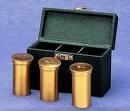
Pall:
A cloth covered square that fits over the chalice.
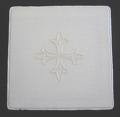
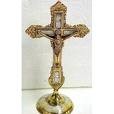
Alter Crucifix:
Placed in center front of alter for celebrante.
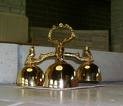
Consecration bells:
Bells used at consecration of the Mass.
Hand bell:
Used to announce the start of Mass.
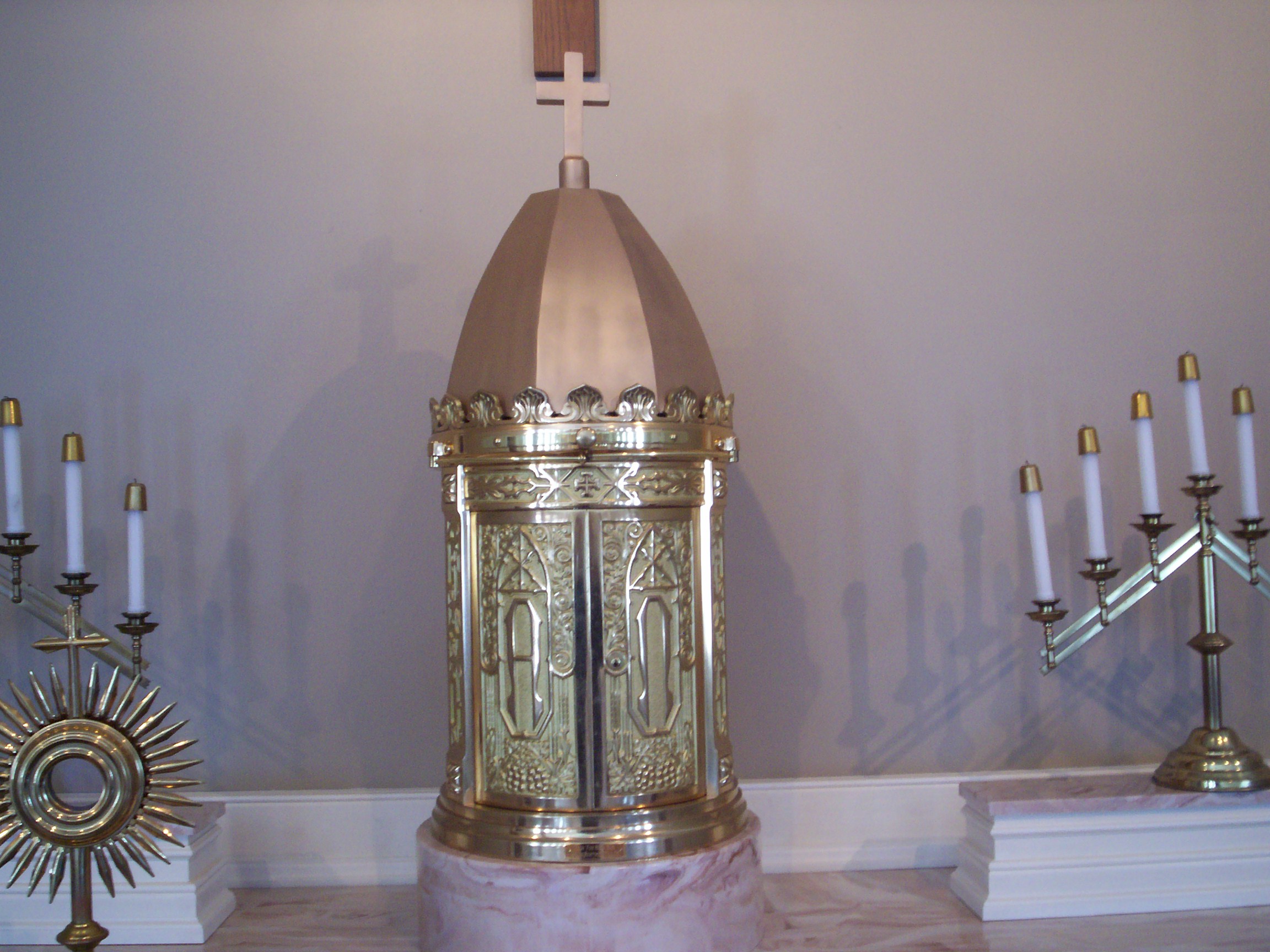
Ciborium:
Used to hold the unconsecrated hosts before the sacrafice of the Mass. An consecrated in tabernacle after mass.
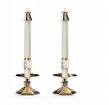
Alter candles:
Used during Mass and all services.

Votive candle stand:
Candles can be lit in memory, or for prayer and special intentions.
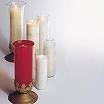
14 day candle:
Long burning candle placed in reverance and memory.

Holy water storage font:
Used to store blessed holy water.

Main Crucifix:
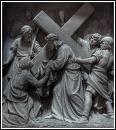
14 Stations of the Cross:
Placed in circle of church walls to show the way of the cross.

Baptismal font:
Used to baptise in special ceramony those entering the catholic faith.
Baptismal candle:
Used in baptism.
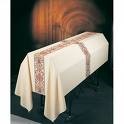
Funeral Pall:
White cloth covering used during funeral mass to cover casket.